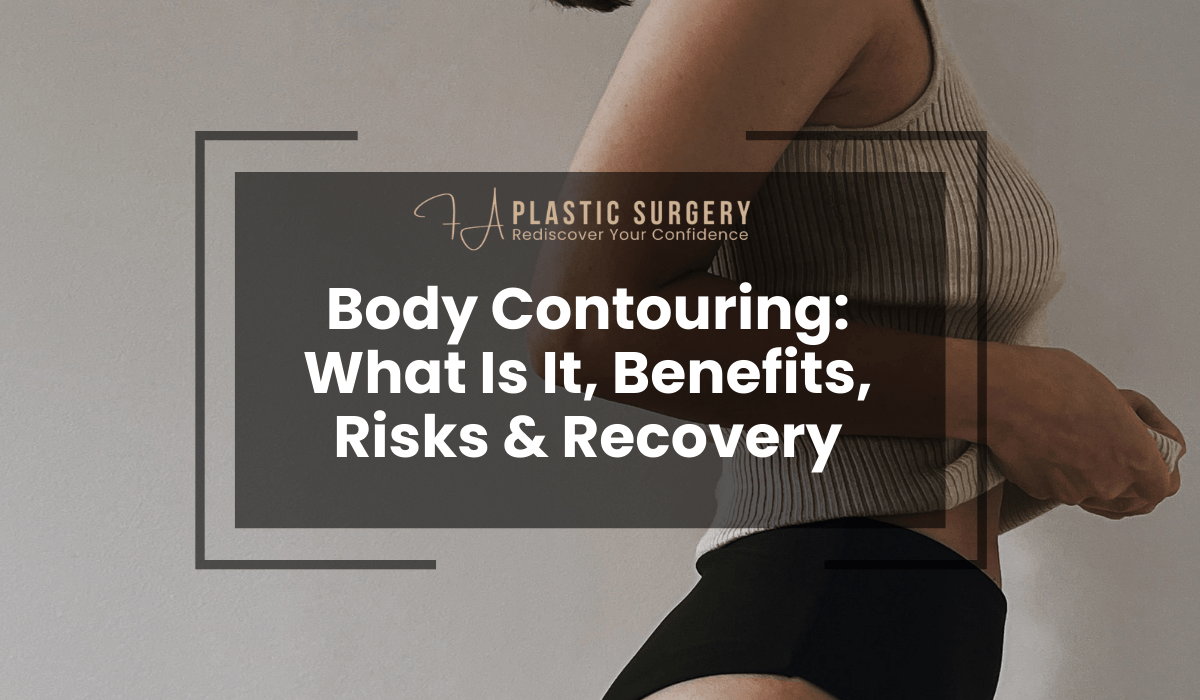Table of Contents
What Is Body Contouring? An Overview of the Procedure
Body contouring refers to a range of surgical and non-surgical procedures designed to reshape and improve the appearance of the body. It is often sought by individuals who have experienced significant weight loss, pregnancy, or aging, which can result in excess skin or stubborn fat deposits that are resistant to diet and exercise. The primary goal of body contouring is to enhance the body’s natural proportions, creating a smoother and more toned appearance.
While some may associate body contouring solely with fat removal, it encompasses various treatments aimed at addressing different concerns. These include liposuction for fat removal, tummy tucks (abdominoplasty) for tightening loose abdominal skin, and even arm lifts or thigh lifts for sagging skin in those areas. Non-surgical methods like laser therapy or cryolipolysis (fat freezing) also fall under this category but tend to be less invasive with varying results.
Overall, body contouring can significantly boost self-confidence by enhancing one’s physical appearance. However, it’s important to consult with an experienced surgeon like Mr Foiz Ahmed to determine which procedures will best meet your individual goals.
Different Types of Body Contouring: Surgical vs Non-Surgical Options
Body contouring can be broadly categorized into two types: surgical and non-surgical options. Each has its own advantages and considerations depending on your aesthetic goals, recovery time preferences, and overall health.
Surgical Body Contouring
Surgical options offer more dramatic results but come with longer recovery periods. Common procedures include:
- Liposuction: This removes localized fat deposits from areas such as the abdomen, thighs, or arms.
- Tummy Tuck (Abdominoplasty): This tightens loose skin around the abdomen while also repairing separated muscles.
- Arm Lift (Brachioplasty): This reduces excess skin on the upper arms.
- Thigh Lift: Targets sagging skin on the inner or outer thighs for a firmer appearance.
Non-Surgical Body Contouring
Non-surgical options, while less invasive, typically require multiple sessions and yield more subtle changes. Popular treatments include:
- Cryolipolysis (Fat Freezing): Uses cold temperatures to destroy fat cells without surgery.
- Laser Lipolysis: A minimally invasive procedure that uses lasers to break down fat cells.
- Radiofrequency Skin Tightening: Stimulates collagen production for tighter skin over time.
The choice between surgical and non-surgical methods should be based on your desired outcomes as well as your willingness to undergo recovery periods. Consulting a qualified plastic surgeon will help you make an informed decision about which approach is right for you.
How Painful Is Body Contouring Surgery? Managing Discomfort and Recovery
Pain levels after body contouring surgery vary depending on the type of procedure performed. For example, liposuction tends to cause mild discomfort compared to more extensive surgeries like abdominoplasty or thigh lifts. While each patient’s experience is unique, most report feeling sore rather than experiencing sharp pain post-operatively.
Pain Management Techniques
- Pain Medications: Your surgeon will prescribe pain relief medications that can be taken orally during the first few days following surgery when discomfort is usually at its peak.
- Icing: Applying ice packs intermittently can help reduce swelling and alleviate discomfort in treated areas.
- Compression Garments: Wearing compression garments helps minimize swelling and supports healing tissues by keeping them in place.
The majority of patients find that their discomfort decreases substantially within one week after surgery. However, full recovery may take several weeks or even months depending on the extent of the procedure performed. Adhering closely to post-operative instructions provided by your surgeon will promote quicker healing while minimizing complications related to pain management during recovery.
For further guidance on managing discomfort during your recovery journey feel free to get in touch through our contact page:
Contact Mr Foiz Ahmed’s office here.
Frequently Asked Questions About Body Contouring
1. What is body contouring?
Body contouring refers to a variety of procedures, both surgical and non-surgical, aimed at reshaping and improving the appearance of the body. It can address excess skin, stubborn fat deposits, and other concerns that may arise due to weight loss, pregnancy, or aging.
2. Who is a good candidate for body contouring?
A good candidate for body contouring is someone who is in good overall health, has achieved their ideal weight, and has realistic expectations about the results. Individuals with excess skin or fat deposits that don’t respond to diet and exercise are often ideal candidates.
3. What are the most common types of body contouring procedures?
The most common surgical procedures include liposuction, tummy tucks (abdominoplasty), arm lifts (brachioplasty), and thigh lifts. Non-surgical options include cryolipolysis (fat freezing) and laser lipolysis.
4. How long does it take to recover from body contouring surgery?
Recovery time varies depending on the procedure performed. For instance, liposuction may require just a few days of rest, while more extensive surgeries like abdominoplasty could take several weeks for full recovery.
5. Are there risks associated with body contouring surgery?
As with any surgery, there are risks involved such as infection, scarring, or complications related to anesthesia. However, when performed by an experienced surgeon like Mr Foiz Ahmed, these risks are minimized significantly.
Liposuction and Body Contouring in Hertfordshire

